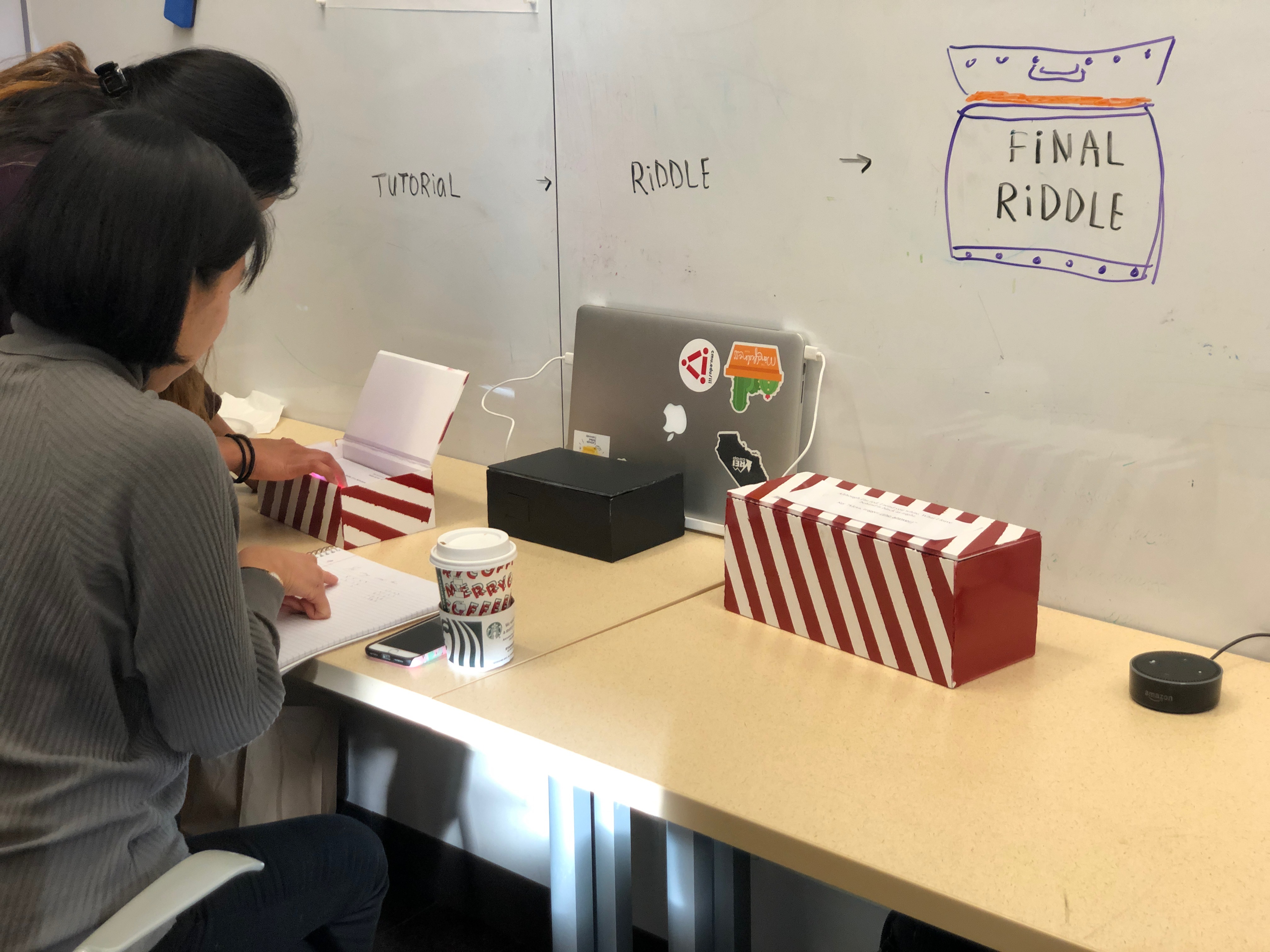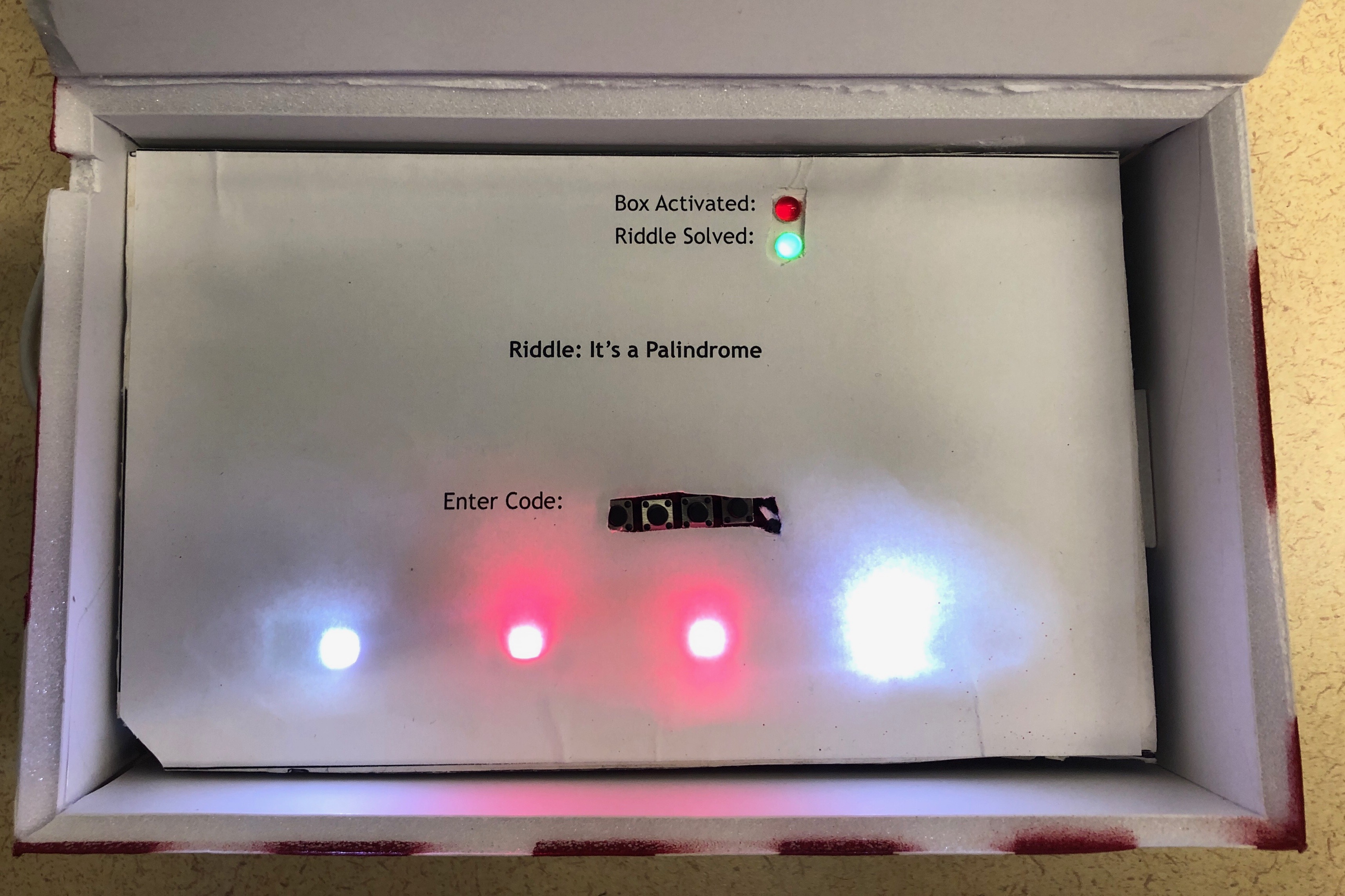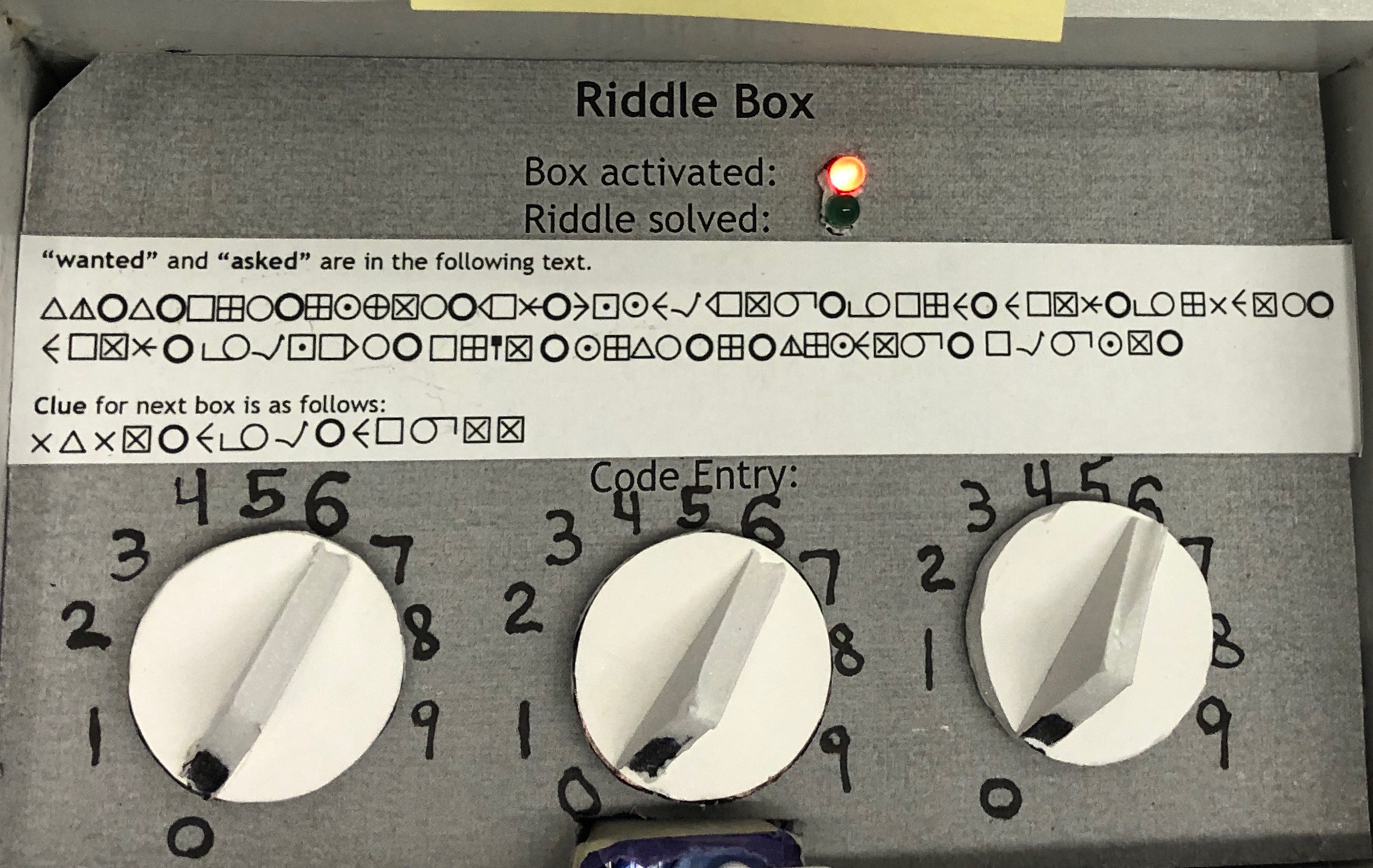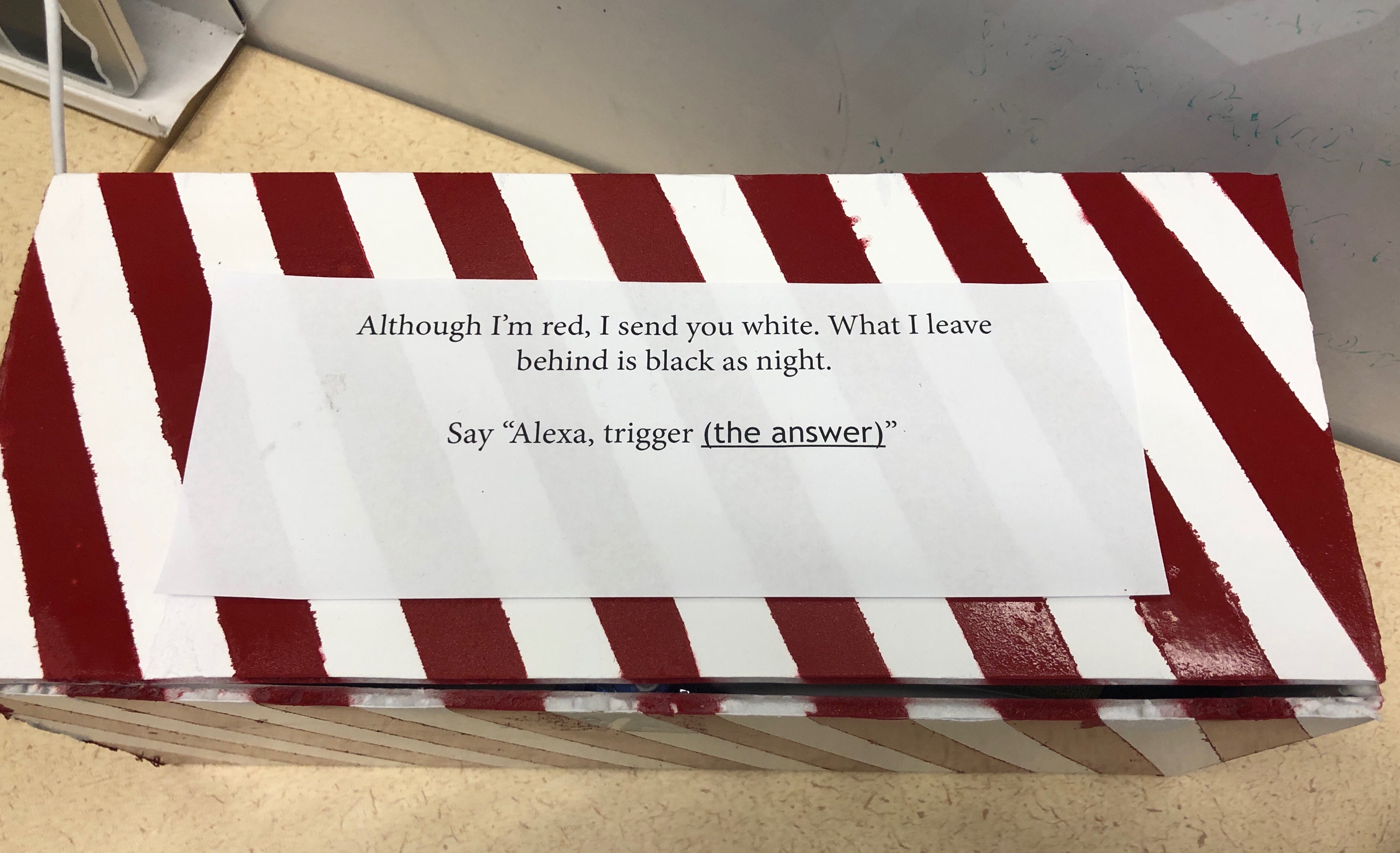Process
Starting with a similar concept to a prisoner’s dilemma game, we spent a considerable amount of time figuring out game logistics and balancing the aspects of fun, how challenging it would be, and how well we could implement IoT features. After testing our first prototype and talking to our professor, we found that inventing a captivating game is highly complex and can be unpredictable. Moving forward, we chose a concept structure where players competed against the game and not one another, and this motivated our scavenger hunt game involving riddles, codes, and collaboration within a community.
One concept we worked through during our game design was how the boxes would function to unlock. For example, one iteration of our game had a 9- number keypad where users would enter in a number code. All of these pieces involved setup to connect to the Particle so we reduced the size of the "number pad" and made it binary buttons rather than making each button correspond to a number. We also tested out using potentiometers to dial in number values that could unlock a box. While we made it work, we weighed other options in order to maximize durability and precision of our product. This hardware is sensitive, and if the pieces got shifted or compromised the players would not be able to unlock the box. For future prototypes, we could use another way to enter numbers.
Another concept we considered was having a linear or parallel structure to the game. Meaning, would opening one riddle box lead to another box? Or, could players unlock boxes in any order and then be able to solve the final puzzle once the others were done? We liked the idea of the former since this meant people would not know what stage of the puzzle they are at, which requires more coordination and effort to determine the scope of the puzzle.






